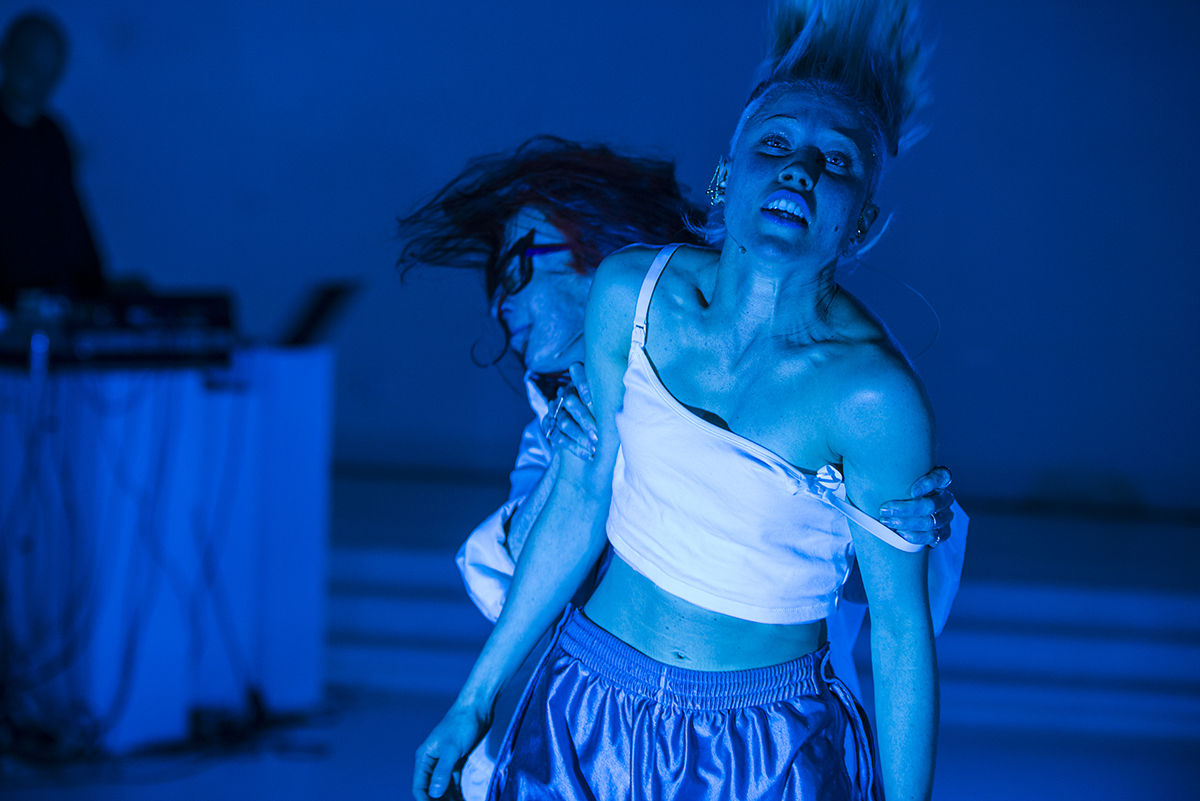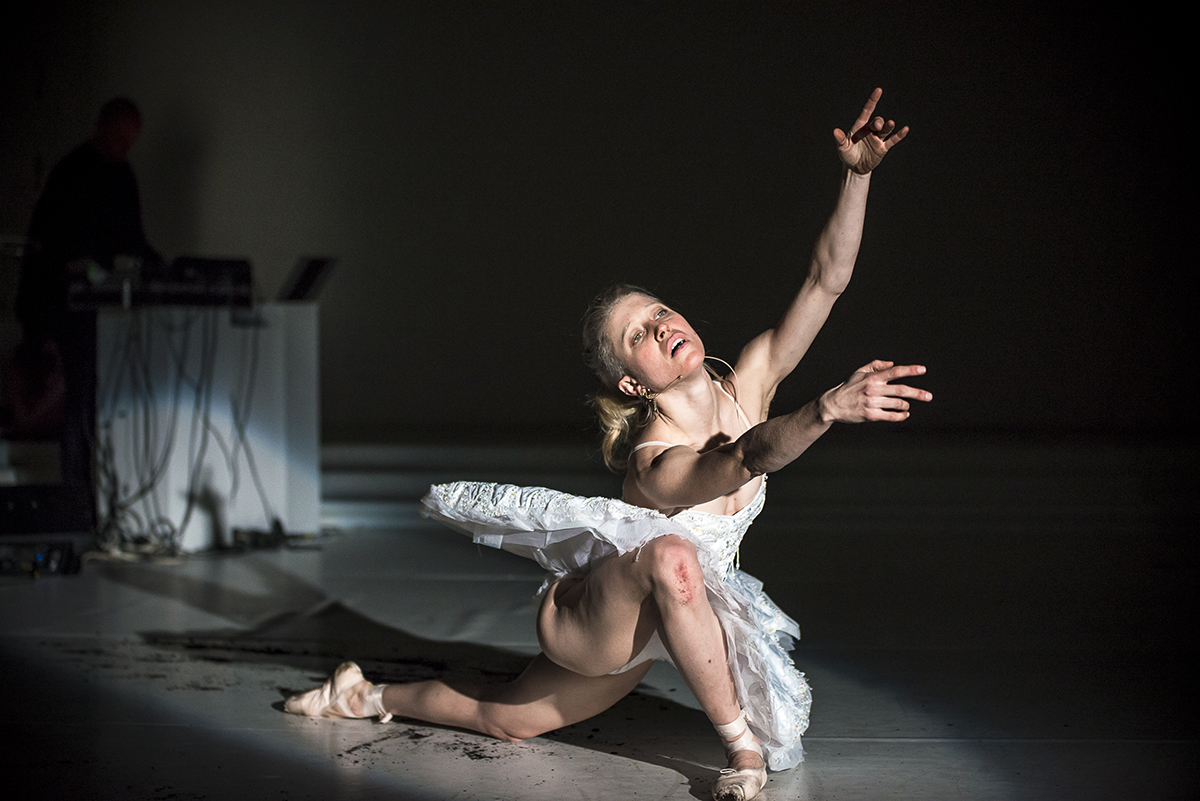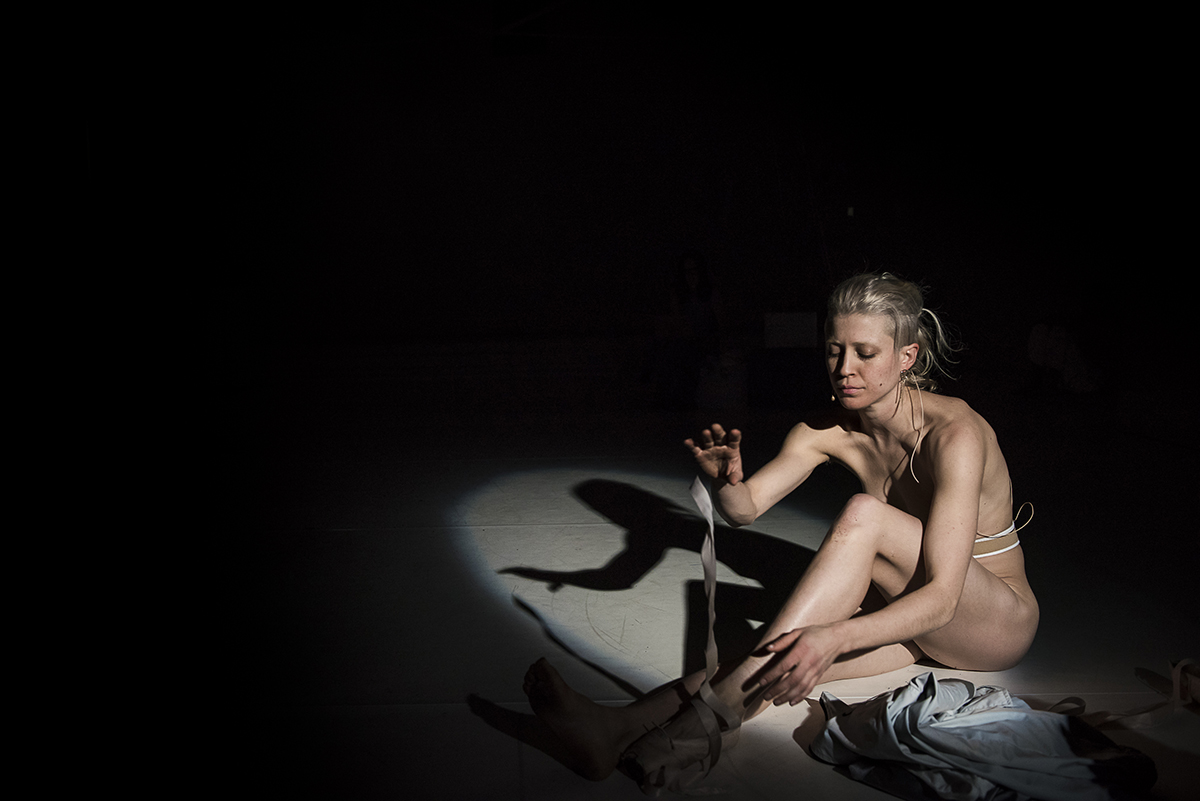
Natalie Abbott: some other swan
Natalie Abbott’s (re)PURPOSE: the MVMNT stages a whimsical and somewhat desultory encounter with The Dying Swan, Mikhail Fokine’s classical ballet solo from 1905. Not that this is in any sense an illustration or adaptation. Abbott is less interested in the work itself than in contesting the discourse that defines the work’s classic status.
Entering the upstairs studio at Dancehouse, we are greeted by the sound of Camille Saint-Saëns’ Le cygne, performed by Miles Brown on a theremin. Once everyone is settled, Natalie Abbott and Cheryl Cameron, both naked, appear from behind the audience and creep slowly across the stage. These may well be dying swans, of a sort: one relatively young and one relatively old. They shuffle forward, both slightly hunched, moving stiffly, keeping close to one another. Their arms waft in a parody of balletic grace.

Natalie Abbott, (re)PURPOSE:the MVMNT, photo Gregory Lorenzutti
Completing their entrance, Abbott and Cameron lie face down on a sheet of silvery foil spread on one side of the stage area. The lights change to sepulchral blue and Geoffrey Watson enters through a door at the back of the stage, clomps over to the prone dancers and upends a bag of potting mix. The swans are laid to rest.
But (re)PURPOSE is less about the performance of death itself than the tragic obsession, perverse in a deep cultural sense, with the performance of death by young female dancers. Cameron and Abbott dust themselves off and read a scripted dialogue in which Abbott asks Cameron to kill her in the next scene. Cameron is not keen on this and the two argue. Cameron shouts. She knows what’s going on. She knows what’s happening. And so do we: wicked Madge or some other older woman must liquidate the heroine. This is ballet’s fairytale logic.
Like much recent independent dance in Melbourne, (re)PURPOSE is a loosely organised and thoroughly decentred work that staggers from one suggestive but half-realised performance idea to the next, revelling in dramaturgical disunity and the guilelessness of its own awkward and misconstrued but unmistakably generous invitation.

Natalie Abbott, (re)PURPOSE:the MVMNT, photo Gregory Lorenzutti
It is cheerful, but a bit complacent. We are presented with two bodies, but there is nothing immediately striking in the contrast, or in the way the two bodies are orchestrated. There is little of the rigour we saw in MAXIMUM, a work by Abbott from 2014 which examined the different physicality of a female dancer and a male bodybuilder.
It is not Fokine’s Swan that is being danced here, but we do at last catch sight of the familiar ballet, emerging briefly from behind the pile of bright ideas. Abbott climbs into a long white tutu and a pair of pointe shoes and performs a few stuttering bourrées. The lights go down and Watson takes control of a small spotlight and begins haranguing her through a bullhorn.
Yes, there are a lot of props, and a lot of different kinds of performance material, including a transcript of a phone interview with Marilyn Jones, a former principal artist and then Artistic Director of Australian Ballet. But to what end? This is choreography which aspires to the condition of critical apparatus, and yet it struggles to convey the necessary intimate knowledge of history and aesthetics and culture.
–
(re)PURPOSE: the MVMNT, choreographer, performer Natalie Abbott, performers Cheryl Cameron, Crystal Yixuan Xu, Rachael Wisby, Geoffrey Watson, dramaturg Frances Barrett, sound design Miles Brown, Alex Cuffe, lighting design Jonathan Wedgwood; Dancehouse, Melbourne, 5-9 July
Top image credit: Natalie Abbott, Cheryl Cameron, (re)PURPOSE: the MVMNT, photo Gregory Lorenzutti






